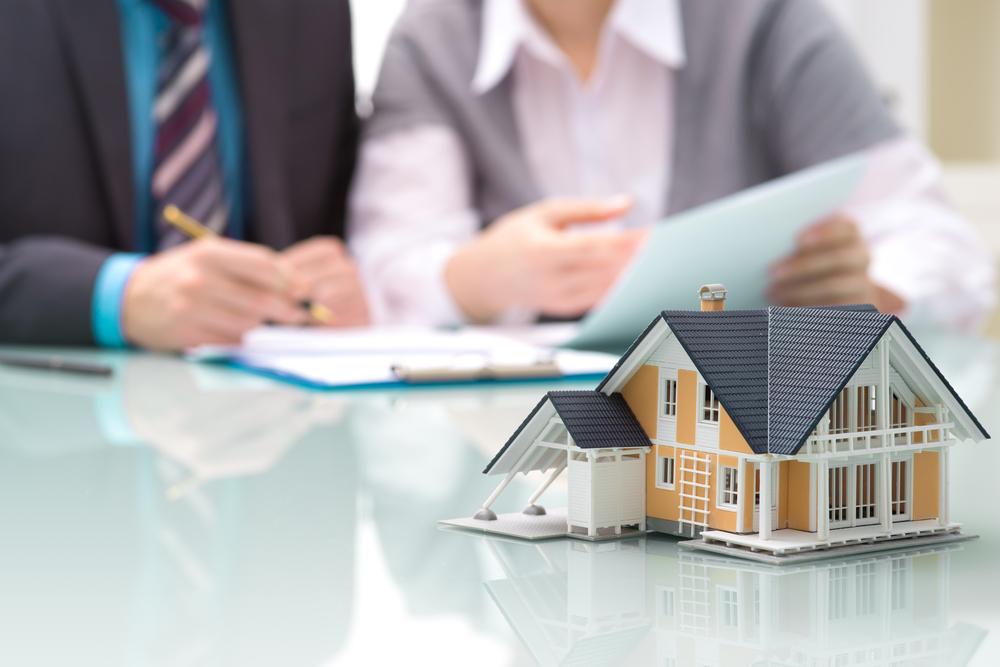As a landlord, one of the most important things you can do is to improve rental property curb appeal because once you do this, you can attract quality tenants to your rental property. One of the most effective ways to make a lasting first impression is through curb appeal. Curb appeal refers to the attractiveness of a property when viewed from the street, and it plays a crucial role in attracting potential tenants. A well-maintained and visually appealing exterior can pique the interest of renters and set your property apart from the competition.
Investing in landscaping for your rental property is a smart decision that can yield numerous benefits. Not only does it enhance the overall appearance of your property, but it also increases its value. A beautifully landscaped property creates a positive perception and suggests that the interior is just as well taken care of. Additionally, a thoughtfully designed landscape can improve the functionality and livability of the outdoor space, making it more appealing to potential tenants.
Benefits of Investing in Rental Property Curb Appeal
Investing in landscaping for your single-family rental property can yield a range of benefits that go beyond aesthetics. A well-designed and maintained landscape can help attract and retain high-quality tenants, reduce vacancies, and even command higher rental rates. Here are some key benefits of landscaping for rental properties:
- Increased Tenant Demand: A visually appealing landscape can attract a larger pool of potential tenants, increasing the demand for your rental property. Tenants are more likely to choose a property that offers an inviting outdoor space for relaxation and entertainment.
- Higher Rental Rates: A well-landscaped property can command higher rental rates compared to properties with neglected or uninspiring exteriors. Tenants are often willing to pay a premium for a property that offers a beautiful and well-maintained outdoor environment.
- Reduced Vacancies: By improving the curb appeal of your rental property, you can significantly reduce vacancies. Potential tenants are more likely to be interested in a property that stands out from the rest and appears well cared for.
- Improved Tenant Satisfaction: A thoughtfully designed landscape can enhance the overall tenant experience. Outdoor amenities such as well-kept gardens, seating areas, and recreational spaces can contribute to tenant satisfaction and increase the likelihood of lease renewals.
Factors to Consider When Creating a Landscaping Plan for a Single-Family Rental Property
Designing a landscaping plan for your single-family rental property requires careful consideration of various factors. By taking these factors into account, you can create a visually appealing and functional landscape that meets the needs of your tenants. Here are some important factors to consider:
- Budget: Determine your budget for landscaping improvements. Consider the long-term return on investment and prioritize essential elements that will have the most significant impact on curb appeal.
- Climate and Maintenance: Choose plants and materials that are suitable for your local climate and require minimal maintenance. Opting for low-maintenance landscaping will save you time and money in the long run.
- Tenant Preferences: Consider the preferences and lifestyle of your target tenants. For example, families with children may appreciate a spacious lawn, while young professionals may prefer a low-maintenance garden.
- Local Regulations: Familiarize yourself with any local regulations or homeowner association guidelines that may impact your landscaping choices. Ensure that your plans comply with any restrictions or guidelines in your area.
By carefully considering these factors, you can create a landscaping plan that enhances the curb appeal of your rental property while meeting the needs and preferences of your tenants.
Designing a Low-Maintenance and Cost-Effective Landscape
When designing a landscaping plan for your rental property, it is important to prioritize low-maintenance and cost-effective solutions. Here are some strategies to achieve this:
- Choose Native Plants: Native plants are well-adapted to the local climate and require less water, fertilizer, and maintenance. They are also more resistant to pests and diseases, reducing the need for chemical treatments.
- Utilize Mulch: Mulching not only helps retain moisture in the soil but also suppresses weeds. Opt for organic mulch such as wood chips or bark, as they break down over time and enrich the soil.
- Install an Irrigation System: An automated Portland irrigation system can save time and water by delivering the right amount of moisture to your plants. Consider using drip irrigation or smart controllers to ensure efficient water usage.
- Group Plants with Similar Watering Needs: Grouping plants with similar watering needs together can simplify maintenance and prevent over or under-watering. This will also make it easier for tenants to care for the landscape.
By incorporating these strategies into your landscaping plan, you can create a low-maintenance and cost-effective landscape that retains its beauty throughout the year.
Selecting Suitable Plants and Flowers for Your Rental Property’s Landscape
Choosing the right plants and flowers for your rental property’s landscape is crucial for creating an aesthetically pleasing and inviting outdoor space. When selecting plants, consider the following factors:
- Sunlight Requirements: Determine the amount of sunlight your landscape receives throughout the day. Choose plants that thrive in the available light conditions, whether it’s full sun, partial shade, or full shade.
- Watering Needs: Select plants that have similar watering requirements to simplify maintenance. This will ensure that all plants receive adequate moisture without over or under-watering.
- Seasonal Interest: Choose a variety of plants that offer seasonal interest throughout the year. This can include plants with colorful blooms in spring and summer, vibrant foliage in autumn, and evergreen plants for winter interest.
- Disease and Pest Resistance: Opt for plants that are known for their disease and pest resistance. This will help minimize the need for chemical treatments and reduce maintenance.
Consider consulting with a local nursery or landscape professional to get expert advice on suitable plants for your rental property’s landscape. They can help you select plants that are well-suited to your climate and provide guidance on proper planting techniques.
Incorporating Hardscaping Elements for Added Appeal
In addition to plants and flowers, incorporating hardscaping elements into your rental property’s landscape can add visual interest and functionality. Hardscaping refers to the non-living elements of a landscape, such as pathways, patios, and retaining walls. Here are some ideas for incorporating hardscaping elements:
- Pathways: Installing a well-defined pathway can improve the flow and accessibility of your outdoor space. Consider using materials such as gravel, pavers, or natural stone to create a visually appealing pathway.
- Patios and Seating Areas: Create inviting outdoor living spaces by adding a patio or seating area. This can be a focal point for tenants to relax, entertain guests, and enjoy the beauty of the landscape.
- Retaining Walls: If your rental property has sloping terrain, consider installing retaining walls to create level areas for planting beds or seating areas. Retaining walls can add dimension and visual interest to the landscape.
- Water Features: A small water feature, such as a fountain or pond, can bring a sense of tranquility to your rental property’s landscape. It can also attract birds and wildlife, adding to the overall appeal.
When incorporating hardscaping elements, ensure that they are in harmony with the overall design and style of your rental property. A well-executed combination of plants and hardscaping can create a visually stunning and functional landscape.
Enhancing Privacy and Security with Landscaping Features
Privacy and security are important considerations for any rental property. By strategically incorporating landscaping features, you can enhance both privacy and security while maintaining an attractive outdoor environment. Here are some landscaping ideas to consider:
- Fencing and Hedging: Install a fence or hedge around your rental property to create a sense of privacy and security. Consider using plants such as evergreen shrubs or tall grasses to create a natural barrier.
- Outdoor Lighting: Proper outdoor lighting can improve security and create a welcoming ambiance. Install lights along pathways, near entrances, and in dark corners to deter intruders and provide visibility at night.
- Pruning and Trimming: Regularly prune and trim trees and shrubs to prevent them from becoming potential hiding spots for intruders. This will also ensure that the landscape looks well-maintained and neat.
- Security Plants: Some plants can act as natural deterrents due to their thorns or strong scent. Consider planting roses, holly bushes, or lavender near windows or entrances to discourage unwanted visitors.
By implementing these landscaping features, you can create a secure and private outdoor space for your tenants, giving them peace of mind and contributing to their overall satisfaction.
Maintaining and Updating Your Rental Property’s Landscape
Once you have created a beautiful landscape for your rental property, it is essential to maintain it regularly. Regular maintenance not only keeps the landscape looking its best but also prevents potential issues from arising. Here are some maintenance tips:
- Pruning and Trimming: Regularly prune and trim plants to maintain their shape and promote healthy growth. Remove dead or diseased branches to prevent the spread of diseases.
- Weeding: Regularly remove weeds from planting beds and lawn areas to prevent them from competing with your plants for nutrients and water. Consider using mulch or weed barriers to suppress weed growth.
- Watering: Ensure that your plants receive adequate water, especially during dry periods. Water deeply and less frequently to encourage deep root growth and reduce water waste.
- Seasonal Clean-Up: Perform seasonal clean-up tasks such as raking leaves, removing debris, and cutting back perennials in preparation for the next growing season. This will keep the landscape looking tidy and prevent the spread of pests and diseases.
In addition to regular maintenance, periodically updating your rental property’s landscape can help keep it fresh and appealing. Consider adding new plants, refreshing mulch, or updating hardscaping elements to give the landscape a new lease on life.
The ROI of Landscaping for Rental Properties
Investing in landscaping for your rental property can yield a significant return on investment. A well-designed and maintained landscape can increase the value of your property, attract quality tenants, and reduce vacancies. Here are some ways landscaping can provide a positive ROI:
- Increased Property Value: A beautifully landscaped property can significantly increase its value. Studies have shown that well-landscaped homes can command higher sale prices and appraisal values.
- Higher Rental Rates: As mentioned earlier, a well-landscaped rental property can attract higher-quality tenants who are willing to pay a premium for an attractive outdoor space. This can lead to higher rental rates and increased cash flow.
- Reduced Vacancies and Turnover: By enhancing the rental property curb appeal of your rental property, you can reduce vacancies and turnover. Tenants are more likely to stay longer in a property they find visually appealing and well-maintained.
- Positive Perception: A thoughtfully designed landscape creates a positive perception among potential tenants. It suggests that the property is well cared for and implies that the interior is equally well-maintained.
By investing in landscaping for your rental property, you are not only enhancing its curb appeal but also increasing its value and potential for long-term profitability.
How Landscaping Can Attract Tenants and Increase Rental Property Value
Investing in landscaping for your rental property is a strategic move that can yield numerous benefits. A well-designed and maintained landscape enhances the curb appeal of your property, attracting high-quality tenants and commanding higher rental rates. By considering factors such as budget, climate, and tenant preferences, you can create a low-maintenance and cost-effective landscape that meets the needs of your target tenants.
Incorporating suitable plants, hardscaping elements, and landscaping features can further enhance the visual appeal and functionality of your rental property’s outdoor space. Additionally, prioritizing privacy and security features can contribute to tenant satisfaction and peace of mind.
Regular maintenance and periodic updates will help keep your rental property’s landscape in top shape, ensuring its long-term attractiveness and value. By investing in landscaping, you are not only improving the immediate appeal of your rental property but also making a solid long-term investment in its value and profitability.
So, go ahead and create a comprehensive landscaping plan to boost rental property curb appeal. Your tenants will appreciate the inviting outdoor space, and you will reap the benefits of increased tenant demand, higher rental rates, and a more valuable investment.
To learn more about our property management services, click here to connect with us online.




